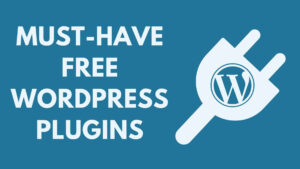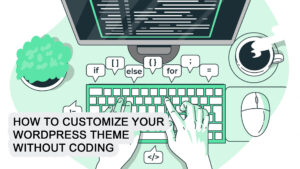Website speed is no longer just a luxury — it’s a necessity. A slow website can damage your SEO, increase bounce rates, and hurt your conversions. According to Google, if your site takes more than 3 seconds to load, over 53% of mobile users will leave immediately.
Luckily, you don’t need to be a developer or spend hours tweaking code. In this blog, we’ll show you step-by-step how to speed up your WordPress website in under 30 minutes — using beginner-friendly tools and plugins.
From choosing the right hosting to optimizing images and using caching plugins, every step you take today will make your website faster, smoother, and better for both users and search engines.
Let’s dive in and turbocharge your site now!
1. Choose a Fast Hosting Provider
Your hosting server is the foundation of your website’s performance.
Why it matters:
-
Cheap/shared hosting slows your site during traffic spikes.
-
Reputable hosts use SSD storage, optimized PHP, and built-in caching.
Recommended Hosts:
-
SiteGround – Great for beginners, fast, secure.
-
Cloudways – Excellent performance, scalable.
-
Hostinger – Budget-friendly and surprisingly fast.
Pro Tip:
-
Avoid free or overcrowded shared hosting.
-
Choose data center location nearest to your target audience.
✅ Time spent: 3–4 minutes (assuming you’re already using a decent host)
2. Use a Lightweight Theme
Your theme can either speed up or drag down your site. Avoid bloated themes with too many features you don’t use.
Recommended Lightweight Themes:
-
Astra
-
GeneratePress
-
Neve
-
Blocksy
What to check:
-
Theme demo load time
-
GTMetrix or PageSpeed Insights score
-
Number of scripts/styles loaded
✅ Time spent: 3–5 minutes (install and activate)
3. Install a Caching Plugin
Caching stores a copy of your page to serve future visitors faster — reducing load time by up to 50–80%.
Best WordPress Caching Plugins:
-
LiteSpeed Cache (if your host supports LiteSpeed)
-
WP Rocket (premium, easy setup)
-
W3 Total Cache (advanced users)
-
WP Fastest Cache (free & effective)
Setup:
-
Install > Activate > Enable caching
-
Turn on: page cache, browser cache, GZIP compression, and minify HTML/CSS/JS
✅ Time spent: 3 minutes
4. Optimize Images Automatically
Large images are the #1 reason for slow WordPress sites. Every image must be compressed before loading.
Recommended Plugins:
-
Smush – Free, auto compression, lazy loading
-
ShortPixel – Strong compression, WebP support
-
Imagify – Good balance between quality & speed
Best Practices:
-
Use JPG for photos, PNG for graphics
-
Enable lazy loading (loads images only when in view)
-
Convert images to WebP format for better performance
✅ Time spent: 4–5 minutes (install + bulk optimize)
5. Use a Content Delivery Network
A CDN delivers your site content from global servers, reducing load time for users far from your hosting server.
Best Free CDN:
-
Cloudflare – Free & easy to integrate
-
Jetpack CDN – Image + static file CDN
-
BunnyCDN – Cheap and super fast
How to set up:
-
Sign up at cloudflare.com
-
Add your domain > Update DNS records (Cloudflare guides you)
-
Install the Cloudflare WordPress plugin (optional)
✅ Time spent: 5 minutes
6. Remove Unused Plugins & Themes
Unused plugins or themes can:
-
Load unnecessary scripts
-
Introduce security risks
-
Slow down your admin panel
What to do:
-
Go to Appearance > Themes → Delete any themes you’re not using (except a fallback like Twenty Twenty-One)
-
Go to Plugins > Installed Plugins → Deactivate & delete anything unused
✅ Time spent: 2 minutes
7. Minify CSS, JavaScript, and HTML
Minifying removes unnecessary spaces and characters from your code, making your pages load faster.
Easy way:
Use caching plugins like:
-
LiteSpeed Cache
-
WP Rocket
-
Autoptimize (for manual control)
What to Minify:
-
CSS
-
JavaScript (carefully, test after enabling)
-
HTML
Pro Tip: Always clear cache after making changes.
✅ Time spent: 3–4 minutes
8. Disable Hotlinking
Hotlinking happens when other websites link to your images directly, stealing your bandwidth.
How to stop it (via Cloudflare):
-
Go to Scrape Shield > Hotlink Protection → Enable
Or use .htaccess code:
✅ Time spent: 1 minute
9. Disable WordPress Heartbeat API
The Heartbeat API sends continuous AJAX requests (especially when editing posts) — consuming server resources.
Use:
-
Plugin: Heartbeat Control
-
Reduce frequency or disable entirely (except where needed)
✅ Time spent: 2 minutes
10. Use Lazy Load for Videos & iFrames
Videos and embeds (like YouTube) are heavy and slow down initial load.
Solution:
-
Use WP YouTube Lyte plugin or enable lazy loading in LiteSpeed Cache
-
Replace iFrames with image thumbnails + click to play
✅ Time spent: 2 minutes
Bonus Tips (Optional but Powerful)
🔹 Database Optimization
-
Use WP-Optimize or Advanced Database Cleaner
-
Clean post revisions, transients, spam comments
🔹 Use Fewer External Fonts
-
Limit Google Fonts usage
-
Host fonts locally (if possible)
🔹 Avoid Slider Plugins
-
Sliders are heavy and often unnecessary
-
Replace with a static banner or hero section
Check Your Website Speed
Once all changes are made, test your website speed using:
| Tool | Link |
|---|---|
| Google PageSpeed Insights | pagespeed.web.dev |
| GTMetrix | gtmetrix.com |
| Pingdom | tools.pingdom.com |
Aim for:
-
Load time under 3 seconds
-
Performance grade A or B
-
Core Web Vitals in green
Conclusion
Speeding up your WordPress website doesn’t have to be a complex or time-consuming task. With just 30 minutes and the right tools, you can significantly boost your website’s performance — leading to better user experience, SEO rankings, and conversions.
Start by ensuring you have good hosting, a clean theme, and a caching plugin. Then optimize images, remove bloat, and enable smart features like a CDN and lazy loading.
Remember: website speed is not a one-time fix — it’s an ongoing effort. Revisit your speed settings monthly and stay updated with the latest plugin improvements and best practices.
Your audience — and Google — will thank you.




